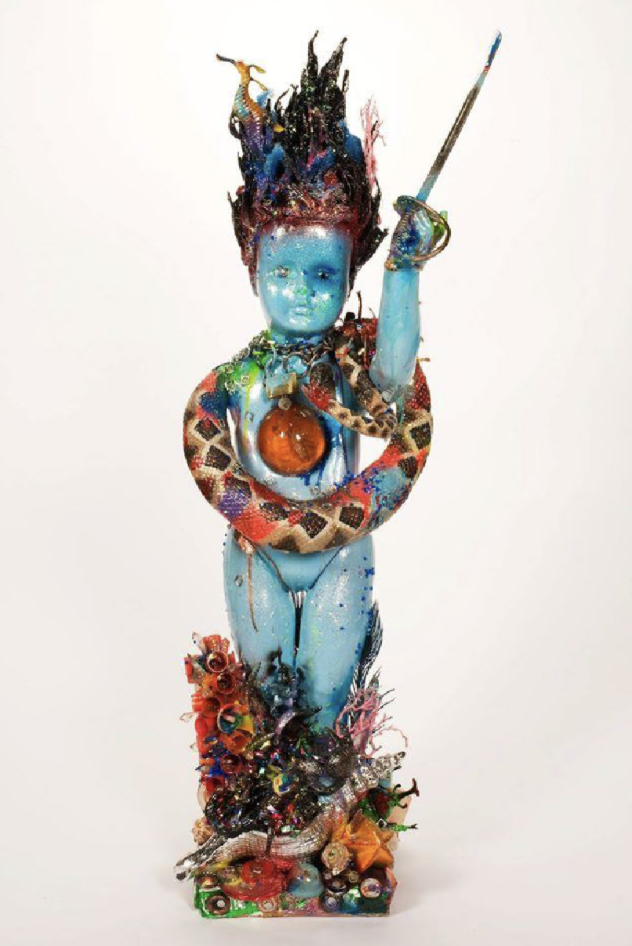Bob Morgan, American
Pangean Youth, 2011
Often overlooked in the field of ecologically conscious art is the art that works around environmentally harmful materials by reusing the refuse and detritus which surrounds the artist. In the case of Bob Morgan’s, a sculptor based out of eastern Kentucky, sculpture Pangean Youth, literal garbage and cheap objects found strewn about the trash heaps and dollar stores of Appalachian Kentucky become the material for a sculptural depiction of Morgan’s experiences as a gay man in the mountains. The sculpture depicts a blue baby doll surrounded by trash and cheap plastic sea creatures. A toy snake emerges from the doll’s right arm hole. On the other hand, the doll carries a sword. While this piece is not explicitly ecological in its content, its very construction—in which Morgan collects discarded objects from around him and adheres them together using adhesive—does not generate any new waste and, in fact, removes waste from his environment in order to create something beautiful. Label by Maxwell Cloe




